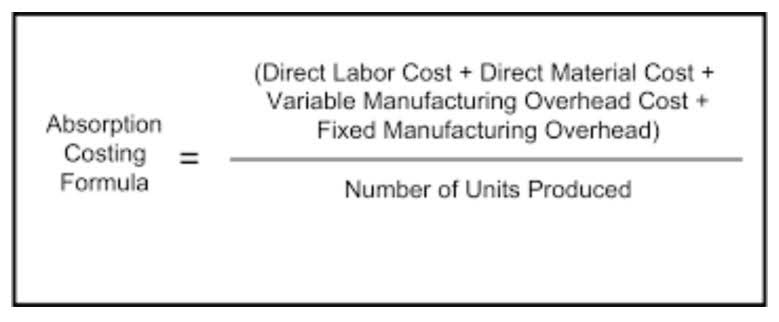Balance Sheet Long-Term Liabilities

Car loans, mortgages, and education loans have an amortization process to pay down debt. Amortization of a loan requires periodic scheduled payments of principal and interest until the loan is paid in full. Every period, the same payment amount is due, but interest expense is paid first, with the remainder of the payment going toward the principal balance. When a customer first takes out the loan, most of the scheduled payment is made up of interest, and a very small amount goes to reducing the principal balance. Over time, more of the payment goes toward reducing the principal balance rather than interest.
Retained earnings, shareholders’ equity, and working capital

If the retained earnings balance is gradually accumulating in size, this demonstrates a track record of profitability (and a more optimistic outlook). Let’s say that in March, business continues roaring along, and you make another $10,000 in profit. Since you’re thinking of keeping that money for reinvestment in the business, you forego a cash dividend and decide to issue a 5% stock dividend instead.

What are some current liabilities listed on a balance sheet?
In the long run, such initiatives may lead to better returns for the company shareholders instead of those gained from dividend payouts. Paying off high-interest debt also may be are retained earnings a current liabilities preferred by both management and shareholders, instead of dividend payments. If a company undergoes liquidation, it will repay the retained earnings balance to shareholders.
- Your Bench account’s Overview page offers an at-a-glance summary of your income statement and balance sheet, allowing you to review your profitability and stay on top of your cash flow from month to month.
- In other words, prior period adjustments are a way to go back and correct past financial statements that were misstated because of a reporting error.
- The rest of the formula for retained earnings stays similar in this version.
- These funds can be used for anything the business chooses, including research and development, buying new equipment, or anything else that will lead to growth for the company.
- A report of the movements in retained earnings is presented along with other comprehensive income and changes in share capital in the statement of changes in equity.
Bonds payable

Stock dividends do not result in asset changes to the balance sheet but rather affect only the equity side by reallocating part of the retained earnings to the common stock account. Retained earnings are an important part of accounting—and not just for linking your income statements with your balance sheets. Retained earnings are a critical part of your accounting cycle that helps any small business owner grow their business.
Use an income statement to figure out your profit

For example, if you have a credit card and you owe a balance at the end of the month it will typically charge you a percentage, such as 1.5% a month (which is the same as 18% annually) on the balance that you owe. Assuming that you owe $400, your interest charge for the https://www.bookstime.com/articles/bookkeeping-for-large-business month would be $400 × 1.5%, or $6.00. To pay your balance due on your monthly statement would require $406 (the $400 balance due plus the $6 interest expense). The account for a sole proprietor is a capital account showing the net amount of equity from owner investments.
Calculating Revenue
The increase in expenses in the amount of $1,000 combined with the $300 decrease in income tax expense results in a net $700 decrease in net income for the prior period. The $700 prior period correction is reported as an adjustment to beginning retained earnings, net of income taxes, as shown in Figure 14.14. There are two options in accounting for appropriated retained earnings, both of which allow the corporation to inform the financial statement users of the company’s future plans. The first accounting option is to make no journal entry and disclose the amount of appropriation in the notes to the financial statement. The second option is to record a journal entry that transfers part of the unappropriated retained earnings into an Appropriated Retained Earnings account. To illustrate, assume that on March 3, Clay Corporation’s board of directors appropriates $12,000 of its retained earnings for future expansion.
What is the approximate value of your cash savings and other investments?
- Usually, companies have an existing balance in this account, which changes from the transfer.
- On the other hand, retained earnings is a “bottom-line” reporting account that is only calculated after all other calculations have been settled.
- As such, the statement of changes in equity is an explanatory statement.
- The $700 prior period correction is reported as an adjustment to beginning retained earnings, net of income taxes, as shown in Figure 14.14.
- The correction involves changing the financial statement amounts to the amounts they would have been had no errors occurred, a process known as restatement.
- All of the other options retain the earnings for use within the business, and such investments and funding activities constitute retained earnings.
Accountants use the formula to create financial statements, and each transaction must keep the formula in balance. This bookkeeping concept helps accountants post accurate journal entries, so keep it in mind as you learn how to calculate retained earnings. Though cash dividends are the most common payout, remember that stock dividends are another option.
What is the formula for the retained earnings ratio?
- Some of the restrictions reflect the laws of the state in which a company operates.
- Retained earnings refer to the total net income or loss the company has accumulated over its lifetime (after dividend payouts are subtracted).
- Those businesses subject to sales taxation hold the sales tax in the Sales Tax Payable account until payment is due to the governing body.
- The scheduled payment is $400; therefore, $25 is applied to interest, and the remaining $375 ($400 – $25) is applied to the outstanding principal balance.
- The entry to Retained Earnings adds an additional debit to the total debits that were previously part of the closing entry for the previous year.
- This means $24.06 of the $400 payment applies to interest, and the remaining $375.94 ($400 – $24.06) is applied to the outstanding principal balance to get a new balance of $9,249.06 ($9,625 – $375.94).

No Comments